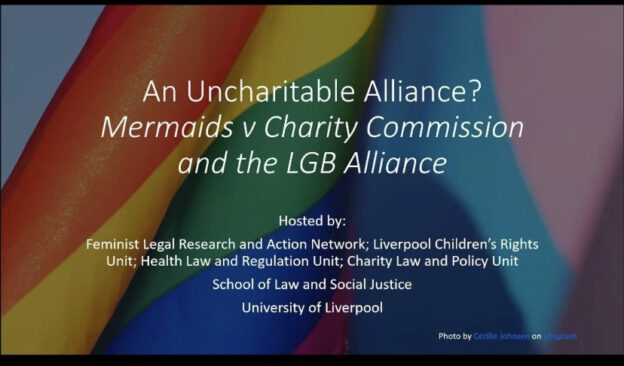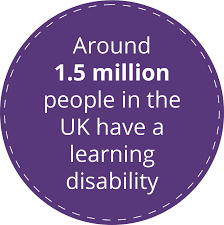The CAFCASS Guidance Working with Children and Gender Identity January 2023 is guidance for children who are not in care. It links to guidance for children who are in care – Trans Youth in Care; a Toolkit for Caring Professionals – but this is dated 2017 and refers to Mermaids and the often ridiculed ‘Genderbread Person’. It’s clearly out of date and requires urgent revision.
A document written in 2017 of course cannot comment on the NHS guidelines, the Cass Review, Bell v Tavistock, revised guidance for schools or the recent decisions of various jurisdictions to move away from the ‘affirmative path’ of transgender care for children advocated by WPATH.
But a document with its final draft in January 2023 has no excuse to skate over or simply ignore all that we have learned in the last five years. This is very poor guidance. In essence, it adopts contested political narratives as if they were truth and is going to risk not only the welfare of children but also the professional reputations of those who rely on it.
I was sent a copy of this guidance by a very concerned practitioner. I cannot link to it as apparently CAFCASS will not be publishing it on their website in case it is ‘taken out of context’. This is not acceptable. Parents, lawyers and judges need to know the content of guidance that CAFCASS is requiring its practitioners to follow, particularly in an area so complex and so contested as this.
I will discuss it here, and raise my concerns with the President of the Family Division.
EDIT – thanks to Gender Parity UK for publishing a link to the guidance
Assumption of contested narrative as truth
The introduction makes the following comment
Transgender/gender expansive people (as well as LGB people) have existed since time immemorial. Therefore, any perception that being transgender/ gender expansive is a social construct or a new phenomenon is factually incorrect. Gender expansive children have existed in all times and all cultures of which records remain.
The Guidance relies on the following resources to make this claim – Trans Historical: Gender Plurality before the Modern – Greta LaFleur, Masha Raskolnikov, Anna Kłosowska and – Histories of the Transgender Child Paperback –2018 by Julian Gill-Peterson
This is highly controversial and immediately calls into question the asserted aim of the Guidance being to ‘support’ children rather than “specifically not to direct the child down any particular path”. It is not a claim that should responsibly by made in professional guidance, without at least some attempt to comment upon the recent and rapid surge in children seeking referrals to the Tavistock. This points to social contagion, rather than a diagnosis of gender dysphoria. Referrals to the Gender Identity Development Service (GIDS) at the Tavistock have shown a staggering increase in recent years; from just 97 in 2009/10 to 2,519 in 2017/18.
From 2014/15 to 2015/16, referrals increased by over 100% and from 2015/16 to 2016/17 they increased by 41%. Ages at referral seen by the service ranged from 3 to 17 years old. As Transgender Trend commented, the majority of the children were registered female at birth. This is an unexplained ‘flip’ from earlier years, where the majority of children registered were male.
The stark figures about the increase in female referrals have been explained by two experienced clinicians in this way:
We posit that there are multiple, interweaving factors bearing down on girls and young women that have collided at this particular time causing a distress seemingly related to gender and their sex. These factors comprise both the external world (i.e. the social, political and cultural sphere) and the internal (i.e. the emotional, psychological and subjective). The external and internal interact and feed each other.
Ignoring current evidence
You will search in vain for any discussion about ‘detransitioners’ (those who regret having undergone medical or surgical transition and revert to a gender identity which is in line with their sex observed and recorded at birth) or the phenomenon of ‘rapid onset gender dysphoria’ which points to the likelihood that social contagion is driving much of the ‘gender expansiveness’ of in particular teenage girls.
Of the many shocking aspects of Hannah Barnes’ forensic dissection of what went wrong at the Tavistock in her book ‘Time to Think’, the most concerning for me were the bleak statistics about the children treated there – 70% of the children had more than 5 associated co-morbidities such as abuse, depression, self-harm, suicide attempts, anxiety, eating disorders, ADHD or bullying. 35% of referrals involved children with Austic Spectrum Disorders – experienced by less than 2% of children in the general population. 25% of referrals involved children who had spent time in state care – compared to 0.67% of the general population. Children referred were 10 times more likely to have a parent registered as a sex offender than the general population.
You will search the guidance in vain for any discussion about this. There is simply a short comment that practitioners need to ‘acknowledge and assess the additional complexity and vulnerability a transgender child may present.’
Poor analysis of safeguarding
The Guidance identifies the main issues around ‘safeguarding’ as
- Parental responses
- Parental disputes and differing views
- Homelessness
- Discrimination
- Lack of health and social care support and progression through the care pathway
- Lack of CAMHS provision
- Suicidality and self – harming behaviors
- Hate crime
- Bullying/ difficulty with peers
- Disruption or cessation of formal education
- Conversion therapy- direct or indirect
- Online safety
This again underscores that this guidance operates from a presumption that transition for children should be affirmed. It makes no reference to the risks that flow from working with a cohort of children who are likely to have a significant number of co-morbidities or may be victims of homophobia. We already have a clear example of the dangers of such a blinkered approach in the case of Sonia Appleby, the Named Professional for Safeguarding Children and the Safeguarding Children Lead at the Tavistock. She raised a complaint at an employment tribunal, that Tavistock management directed that safeguarding concerns should not be brought to her attention and clinicians were discouraged from reporting safeguarding concerns to her, over allegations around Ms Appleby’s ‘transphobia’. In September 2021 Ms Appleby was awarded £20K as damages for “significant” injury to her feelings. The tribunal concluded that the trust’s handling of the matter “prevented her from proper work on safeguarding”.
In line with the Guidance’s presumption of affirmation, it is noted that
The majority of parents and families will want to do all that they can to support and act in the best interests of their child when they discover their child is transgender or needs to explore their gender identity
Which raises an interesting question about how CAFCASS intends to treat those parents who are less than delighted that their child is being put on a pathway to medical and surgical transition. The Guidance makes the claim that ‘Evidence shows that young people who have parents/wider family who are supportive of their transgender identity are more likely to have good mental health, including improved outcomes’ but provides no citation for this assertion.
The Guidance notes, ominously
It may be necessary to use public law to safeguard and protect the child and transgender children are no less at risk of abuse than any other child. In fact, their transgender status often makes them at a higher risk where a parent/carer is not a protective factor.
There is reference to ‘conversion therapy’ as ‘morally wrong’ but with no countervailing discussion of the recognition by the Cass Review that there was a need for ‘talking therapies’ as a first resort, rather than affirmation of a medical pathway. This makes me concerned that parents who do not immediately ‘affirm’ their child as ‘truly transgender’ risk finding themselves viewed by CAFCASS as abusive parents
Signposting to outdated, unreliable and dubious sources
The introduction at page 3 signposts the practitioner to Professor Spack’s Ted Talk. Professor Spack is a Consultant Paediatric Endocrinologist explaining his work helping transgender children and described as ‘one of the world leaders in this field… ran the multi-disciplinary Gender Identity Service at Boston’s Paediatric Hospital in the USA.’ The first thing that jumps out is that this Ted Talk dates from November 2013, nearly ten years ago. The notion promoted by Professor Spack that puberty blockers are wholly reversible and simply give a child to think is not supported by the Cass Review interim report. Various judges have commented on the concern that rather than give children ‘time to think’, puberty blockers almost inevitably sets them on a path to cross sex hormones, with the consequent risks to fertility and adult sexual function.
The majority of children who are permitted to go through a natural puberty, will desist from any desire to ‘change sex’. Anyone who is making recommendations about the welfare of ‘gender expansive’ children needs to know and understand this. They also might benefit from understanding a little more about the Boston Children’s Hospital and the recent unease about it’s practices, not least double mastectomies carried out on girls as young as 12.
As Professor Levine noted in 2020:
A 2017 study from the Boston Children’s Hospital Gender Management Service program – 23 – reported that: “Consistent with the data reported from other sites, this investigation documented that 43.3% of patients presenting for services had significant psychiatric history, with 37.1% having been prescribed psychotropic medications, 20.6% with a history of self-injurious behavior, 9.3% with a prior psychiatric hospitalization, and 9.3% with a history of suicide attempts.
Mermaids and Stonewall are listed as useful resources. It is difficult to see how this guidance can in good faith signpost its practitioners in this way. The concerns about Stonewall are now exhaustively documented and very well known and yet CAFCASS remains a Stonewall ‘Diversity Champion’. Mermaids is currently under investigation by the Charity Commission. The inquiry opened in November 2022 and will seek to determine ‘whether the charity’s governance is appropriate in relation to the activities the charity carries out, which involve vulnerable children and young people, as well as their families.’
It is astonishing that CAFCASS would direct its practitioners to an organisation under investigation in this way. But regardless, It is clear that Mermaids heavily promotes ‘affirmation’ and the medical transition of children at ever younger ages. Its views about capacity and consent was expressed in this way in 2019, attempting to erase any distinction between those children who are Gillick competent and those who are not:
….someone’s gender identity, at any age, must be respected. A child identifying as trans, whether it has been submitted this is as a result of harm or not, is identifying as trans and that must be respected throughout proceedings…More often than not, if a child says they are trans, they will be trans.
.
The guidance offers some discussion on the thorny issues of of capacity and consent but any benefit in this discussion is significantly compromised when signposting practitioners to those organisations who do not accept there is any question mark over the transitioning of children – or worse, that any attempt to discuss concerns is unacceptable bigotry
Conclusion
I am not demanding that CAFCASS adopt a particular political view/narrative. I am not denying that there are now and always have been, a small percentage of people who are very unhappy with their bodies and seek relief by being seen as the opposite sex. These people should not face abuse or discrimination. I agree that rigid conformity to sex based stereotypes is often harmful and that children who reject those stereotypes should be protected.
But I also know that we all have only one body and there are clear limits to what can be achieved to change it via medication and surgery. It is simply not possible to ‘change sex’. I hope very much that I am wrong regarding my fears about the welfare of children who undergo irreversible and unevidenced medical treatment. I hope that the research set in motion by the Cass Review will show that these children were not simply part of an unregulated medical experiment in pursuit of an adult agenda. I hope that the coming years do not usher in litigation from those children who were not protected by adults who should have known better. I hope that the lives of a generation of children have not been blighted.
But we are still some time away from any reliable evidence regarding childhood transition. While we wait, we are all entitled to ask that agencies such as CAFCASS, whose reports are highly influential in both private and public law children cases, provides guidance which is based on evidence and which acknowledges where the evidence is shaky – and which accepts that issues of ‘gender incongruence’ or ‘gender expansivity’ in children may involve safeguarding issues, such as promoting homophobia or putting a child on a medical pathway which is potentially irreversible and lacking any compelling evidence base.
This Guidance is not fit for purpose and puts both children and practitioners at risk of harm and reputational damage. I hope it will be withdrawn and significantly revised. Unless and until it is, then I will treat all recommendations by CAFCASS in this area in any case where I am instructed, with significant scepticism.
Further reading
For practitioners who centre the welfare of the child at the heart of their work, rather than allegiance to any adult narrative or ideology, I recommend the guidance co-authored by by Transgender Trend and the Evidence Based Social Work Alliance in 2021 – When can a child consent to medical transition?
An Examination of Gender and Safeguarding in schools – Policy Exchange report 2023
CAFCASS – what went wrong – blog from New Approaches to Contact






